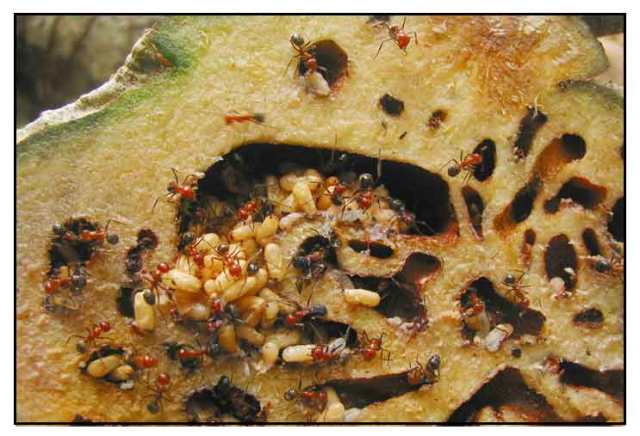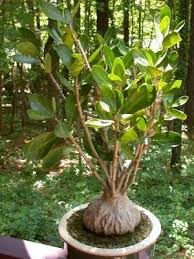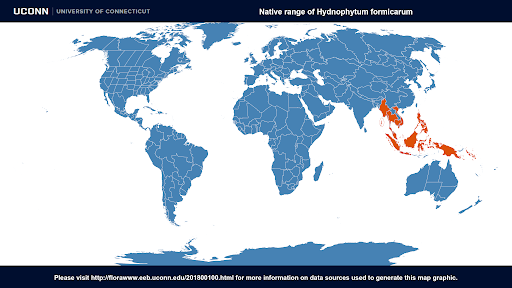The Hydnophytum formicarium is an epiphytic and a myrmecophytic succulent plant. An epiphyte is a plant that grows on the surfaces of other plants, and obtains nutrients and water from the air and debris located around the plant. A myrmecophyte is a plant that has a mutualistic relationship with ant colonies. Ants inhabit the tuber domain of H. formicarium and give the plant a source of nutrients, as well as pollinating the flowers and fruits of the plant. Ants are also a protective mechanism the plant has to defend against tissue diseases and other animals that may hurt the plant.
Family: Rubiaceae (Madder)
Scientific Name Breakdown
The name “Hydnophytum formicarum” derives its name from the Greek words hydnon, which means “tuber”, and phyton which means “plant”.
Growing Environment
H. formicarium grow best in high humidity, average amount of water, and brightly lit environments. These plants are slow growing, and the caudex of the plant grows slowly, and is also hallow due to the ant colonies inhabiting the structure.
Where does Hydnophytum formicarium grow?
This plant is native to countries of Southeast Asia (i.e. Vietnam, Thailand, Cambodia, Singapore, and some islands of Indonesia)
Mutualistic Relationship with Ants
H. formicarum are commonly known as “ant plants” because they have a mutualistic relationship with ant colonies. Both the plant and ants benefit from this relationship. Ants will irritate the base of the plant, causing the tuber to swell in size. As the plant grows, ants will start to burrow their way into the caudex of the plant, leaving behind debris that contains macronutrients for the plant. Ants are known as nesters and dispersers for Hydnophytum formicarium plants. 
Leaves, Seeds and Flowers
H. formicarum have a distinct 6-12 veins that run in the leathery leaves of the plant that distinguish this type of ant plant from others like H. moseleyanum. The picture of the two leaves depicts the difference between these two similar ant plants. The leaf on the leaf is H. formicarum, while the leaf on the right is H. moseleyanum. There is a clear difference in the number of veins located in the leaves. The flowers on H. formicarum are only 3-4 mm in diameter, and contain orange berries as the fruit.
Human Uses
H. formicarum have been medicinally used to treat headaches, rheumatism and diarrhea. Research is being done to see if H. formicarum is an effective cancer treatment alternative based on its anti-oxidative factors in some of the biochemical compounds found in the plant (see compounds below). These compounds are typically sterols, flavonoids and phenolic compounds.
Other Information
Most times, sugars located in plants occur in the flower portion to attract pollinators. But in H. formicarum the sugar production is located in the tuber portion of the plant to attract ants as a protection/nutrient source. This sugar sap is given to ants as a reward for defending the part against diseases and other animals that may hurt the plant.
This plant is considered to be critically endangered in parts of Southeast Asia, specifically in Singapore.
Sources
- http://www.bihrmann.com/caudiciforms/subs/hyd-mos-sub.asp
- https://www.researchgate.net/publication/321375299_Distribution_and_host_identification_of_the_epiphytic_plant_Hydnophytum_formicarum_in_Pulau_Telaga_Tujuh_Setiu
- https://toptropicals.com/catalog/uid/HYDNOPHYTUM_FORMICARUM.htm
- https://bioone.org/journals/Entomological-News/volume-127/issue-5/021.127.0503/Domatia-of-the-Ant-Plant-Hydnophytum-formicarum-Rubiaceae-Captured-as/10.3157/021.127.0503.short
Edited by Bergen Zimmer






